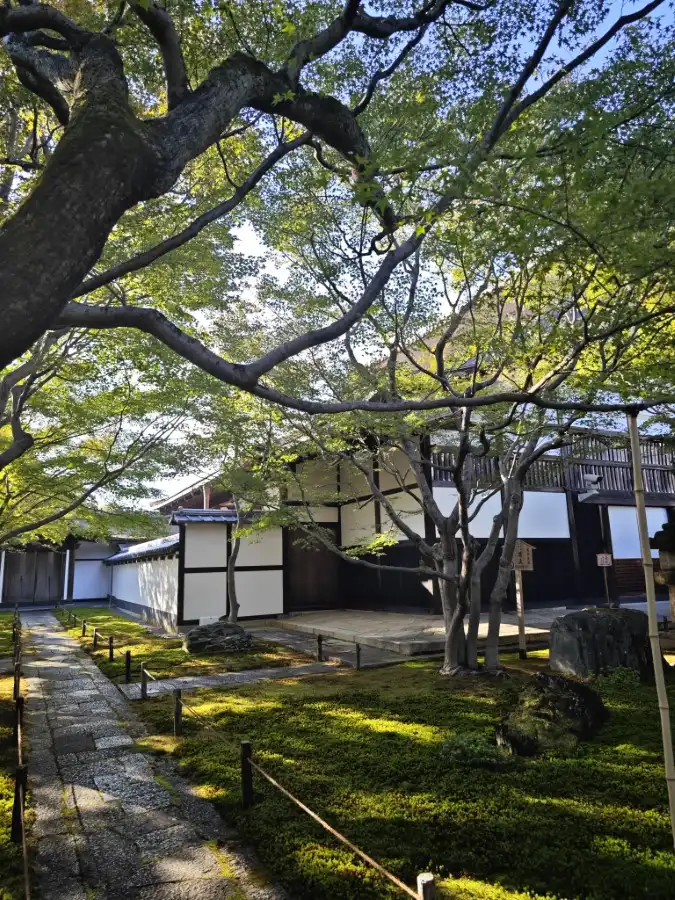Obai-in temple’s gardens are must see if you have chance. This temple is a real hidden gem in Kyoto.
Oda Nobunaga built Obai-an in 1562 as a memorial service for his father, Oda Nobuhide. And it is one of the sub-temples of Daitokuji Temple. After Nobunaga’s sudden death due to the Honnouji Incident, Hideyoshi Hashiba (later Toyotomi) gradually expanded it and renamed it “Obai-in” in 1589.
Visitors will be amazed by the beauty of the front garden just past the gate. Unfortunately, Obai-in is only open to the public during limited times of the year. And furthermore, photography is prohibited inside from the reception area, including the garden. That means, you can only take photos in the front garden.







There are two gardens: “Hatou-tei” and “Jikichu-tei.” Later one is said to have been created by Sen no Rikyu at the request of Toyotomi Hideyoshi. In particular, the beautiful moss and maple trees in the Jikichu-tei garden are a delight to the eyes of visitors.

Kobayakawa Takakage, the third son of Mori Motonari donated Kuri, the oldest existing Zen temple kitchen in Japan. He also served as one of the Five Grand Elders in the administration of Toyotomi Hideyoshi. The main hall and Karamon Gate are also Important Cultural Properties.
Nearby spots from Obai-in
This temple is within the precinct of Daitokuji Temple. The interior of the Daitokuji building is not usually open to the public.
Daitokuji Temple has many sub-temples. Some are open to the public year-round. Others, however, are open only at certain times of the year or are not open to the public at all.
Soken-in Temple
In the main hall of Soken-in there is a statue of Oda Nobunaga (Important Cultural Property).
Daisen-in Temple
Daisen-in is the most important sub-temple. And it is open to the public.
Hoshun-in Temple
Hoshun-in Temple has a bonsai garden. And this garden is open to the public for a fee. If you love bonsai, don’t miss it.
Korin-in Temple
Korin-in is open on special occasions in spring and autumn.
Zuiho-in Temple
Zuiho-in has the famous “cross garden”.
Ryogen-in Temple
Ryogen-in has three dry landscape gardens. The original buildings, the Hojo, Karamon, and Omotemon, are important cultural properties.
Related articles:
[…] Obai-in temple‘s gardens are must see if you have chance. Obai-in is only open to the public during limited times of the year. […]